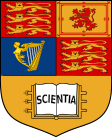Related Research Articles

Imperial College London (Imperial) is a public research university in London, England. Its history began with Prince Albert, consort of Queen Victoria, who envisioned a cultural area that included the Royal Albert Hall, the Victoria and Albert Museum, the Natural History Museum and several royal colleges. Established by royal charter in 1907, Imperial College London unified into one institution the Royal College of Science, the Royal School of Mines and the City and Guilds of London Institute. In 1988, the Imperial College School of Medicine was formed by merging with St Mary's Hospital Medical School. In 2004, Queen Elizabeth II opened the Imperial College Business School.
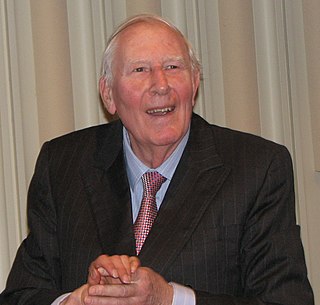
Sir Roger Gilbert Bannister was an English neurologist and middle-distance athlete who ran the first sub-4-minute mile.
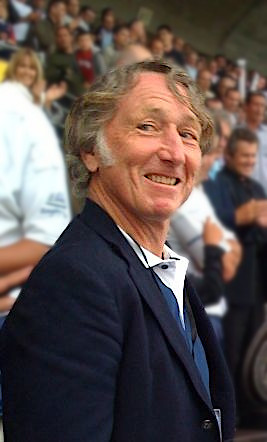
John Peter Rhys Williams was a Welsh rugby union player who represented Wales in international rugby during their Golden Era in the 1970s. He became known universally as J. P. R. Williams four years after his Welsh debut, in 1973 when J. J. Williams joined the Welsh team.

St Mary's Hospital is an NHS hospital in Paddington, in the City of Westminster, London, founded in 1845. Since the UK's first academic health science centre was created in 2008, it has been operated by Imperial College Healthcare NHS Trust, which also operates Charing Cross Hospital, Hammersmith Hospital, Queen Charlotte's and Chelsea Hospital and the Western Eye Hospital.
Imperial College School of Medicine (ICSM) is the undergraduate medical school of Imperial College London in England and one of the United Hospitals. It is part of the college's Faculty of Medicine and was formed by the merger of several historic medical schools. It's core campuses are located at South Kensington, St Mary's, Charing Cross, Hammersmith and Chelsea and Westminster. The school ranked 3rd in the world for medicine in the 2022 Times Higher Education World University Rankings.

St George Girls' High School (SGGHS) is a government-funded single-sex academically selective secondary day school for girls, located in Kogarah, in the southern suburbs of Sydney, New South Wales, Australia.

Charing Cross and Westminster Medical School existed as a legal entity for 13 years, as the midpoint of a series of mergers which strategically consolidated the many small medical schools in west London into one large institution under the aegis of Imperial College London.
Jack Suchet was an English consultant obstetrician and gynaecologist, who carried out research on the use of penicillin in the treatment of venereal disease with Sir Alexander Fleming in London. He was the father of television news journalist John Suchet and actor David Suchet.
Charing Cross Hospital Medical School (CXHMS) was the oldest of the constituent medical schools of Imperial College School of Medicine.
Doctors to Be is a biographical documentary series that was first broadcast on BBC Two by BBC Television and is also the name of a book, published by BBC Books, that accompanies the series. The television series follows 10 medical students who enrolled at St Mary's Hospital Medical School in the 1985 intake of students. It starts in 1984 with their admission interviews, then follows them through five or six years as medical students, and ends with their first experiences of working as busy junior hospital doctors in the National Health Service.
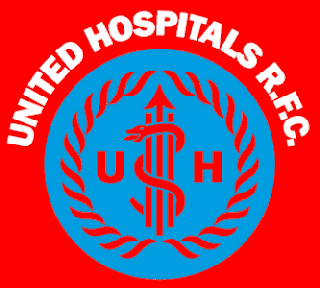
The United Hospitals Rugby Football Club represents the five medical schools in London, each of whom have their own distinct rugby clubs but from whom are picked a select fifteen to compete for UHRFC. The club exists to encourage and facilitate rugby at these institutions. It hosts the United Hospitals Cup, the oldest rugby cup competition in the world.
Imperial Medicals Rugby Club is the name given to the rugby union team of Imperial College School of Medicine Students' Union, a modern amalgam of three formerly distinct hospital rugby clubs each with a long history, having all been founded in the nineteenth century. The teams from Charing Cross Hospital and Westminster Hospital were the first to merge in 1984 following the union of their respective Medical Departments. When St Mary's Hospital, London also merged in 1997 the team was strengthened by one of the two most successful hospital sides in London. Imperial Medics is notable for its recent dominance of the oldest competition in rugby, the United Hospitals Cup, as well as its history and the joint history of its constituent elements which have produced a large number of international players.
United Hospitals is the historical collective name of the medical schools of London. They are all part of the University of London (UL) with the exception of Imperial College School of Medicine which left in 2007. The original United Hospitals referred to Guy's Hospital and St Thomas's Hospital and their relationship prior to 1769. Since then the name has been adopted by the London medical schools.
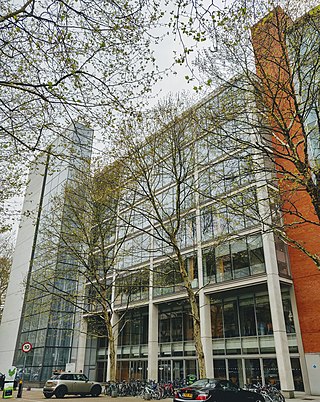
The Faculty of Medicine is the academic centre for medical and clinical research and teaching at Imperial College London. It contains the Imperial College School of Medicine, which is the college's undergraduate medical school.

Imperial College School of Medicine Students' Union (ICSMSU) is the students' union of the Imperial College School of Medicine. It is charged with representing and advocating for the educational, pastoral, social and extracurricular needs of all the undergraduate students within the Faculty of Medicine of Imperial College London, and is a constituent union of Imperial College Union.
Tommy Kemp was a rugby union international who represented England from 1937 to 1948. He also captained his country.

The United Hospitals Athletics Club is a historic athletics club that used to host the annual United Hospitals athletics competition. Since the disbanding of the club, London Universities and Colleges Athletics has organised the competition within the LUCA Indoor Championships. The competition has been held since 1867.
A timeline of the Imperial College School of Medicine, the medical school of Imperial College London.
Morris Youdelevitz Young, known as the "little doctor", was a British medical doctor and researcher. He is best known for working at the Anglo-Persian Oil Company and for pioneering western medicine in south-west Persia. He also worked with Alexander Fleming at the St. Mary's Hospital in London.

Dame Averil Olive Bradley, known professionally as Averil Mansfield, is a retired English vascular surgeon. She was a consultant surgeon at St Mary's Hospital in Paddington, central London, from 1982 to 2002, and in 1993 she became the first British woman to be appointed a professor of surgery.
References
- ↑ BMJ
- ↑ Spindler, Susan (1992). Doctors to Be. BBC Books. pp. 1–3. ISBN 0-563-36095-X.
- ↑ "Episodes from Doctors to Be: 20 Years On broadcast in 2007". BBC. Archived from the original on 21 September 2008. Retrieved 10 April 2010.
- ↑ Richmond, Caroline (14 June 2004). "Jean Ginsburg". The Guardian . Retrieved 16 December 2018.
- ↑ "Alexander Fleming: the Scot who changed world medicine" . Retrieved 22 October 2018.
- ↑ "Obituaries - Tom Kemp". Daily Telegraph. 3 January 2005.
- ↑ "St Mary's Paddington a rugby powerhouse". Daily Telegraph. 20 March 2008.
- ↑ "Augustus Taylor Rowe obituary". Toronto Star . 23 July 2013. Retrieved 18 August 2013.
- ↑ In the news: Andrew Wakefield – Times Higher Education
